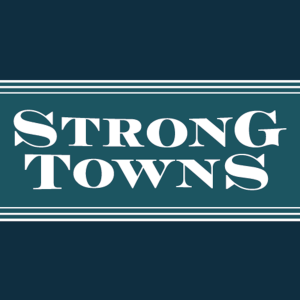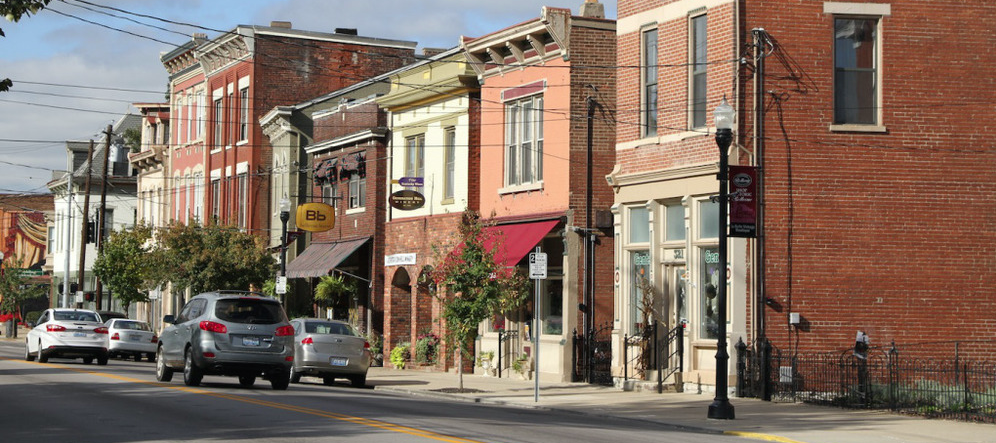3.5M
Downloads
684
Episodes
The Strong Towns Podcast is a weekly conversation on the Strong Towns movement, hosted by Strong Towns Founder and President Charles Marohn and frequently featuring special guests. The podcast explores how we can financially strengthen our cities, towns, and neighborhoods and, in the process, make them better places to live. Join Chuck in examining how everything from urban design to economics to systems theory to psychology helps inform this core question.
Episodes

Monday Jan 28, 2019
Greatest Hits #3: Is a City More Like a Washing Machine or a Cat? (2015)
Monday Jan 28, 2019
Monday Jan 28, 2019
Is a city more like a washing machine or a cat?
No, it's not a riddle—but it probably sounds like one unless you've read the work of Nassim Nicholas Taleb. And whether or not you’ve read Taleb, if you're interested in how cities are complex, unpredictable, adaptive systems—and how we ignore that fact at our peril—we have the podcast for you.
The third entry in our Strong Towns Podcast Greatest Hits series is part 1 of a 2-parter from 2015. We'll run part 2 next week. In this episode, our founder and president Chuck Marohn breaks down, quote by quote, a talk by Taleb called “Small is Beautiful, but Also Less Fragile.”
It's no secret to regular readers of Strong Towns that Chuck is a big fan of Nassim Taleb. For years, we've referred to Taleb as the "Patron Saint of Strong Towns Thinking" for his insights about how complex, antifragile systems weather risk and uncertainty, while top-down, over-engineered systems are vulnerable to catastrophic failure.
Taleb is one of the most innovative thinkers of our time, and if you haven't read his work, we strongly recommend it. But he's not a light read, so this podcast is an excellent primer both on the idea of antifragility, and on how it pertains to cities.
A city is naturally a complex, organic thing with emergent properties. It is the product of millions of interacting decisions and feedback loops. But in the 21st century world, we too often impose top-down systems of order that don't respect that complexity, through financial arrangements and planning regulations.
For example, we may decide that next to a highway interchange is the perfect site for a big-box store: it has the access and can handle the traffic. So we zone for it. What happens when the land owner has unusual circumstances, or the market can’t support that store in that location? Are we prepared to allow something else to emerge?
In a neighborhood of single-family homes, zoned to be single-family homes forever, what happens when economic circumstances or demographic trends change in such a way that stresses the system? A downturn in the local housing or job market? The answer is often predictable, inexorable decline for these neighborhoods, because they can't evolve into something else that works. We don't have any type of natural renewal mechanism.
"In a good organic system, things fail early and fail frequently" says Taleb. The artificial order and efficiency of top-down planning doesn’t prevent failure, says Marohn. It merely makes risk invisible, until that risk builds up and things break catastrophically. It makes cities more fragile.
Modern planning is a bit like helicopter parenting. The parent who hovers over their child, resolves interpersonal conflicts for them, intervenes with his or her teachers the moment there’s an issue at school, may raise what appears to be a successful and confident kid… only to see that veneer of confidence fall away when the child is an adult underprepared for the adult world. So too does over-intervention in the planning of our environment lead to the illusion of stability and success.
Perhaps the most powerful insight Taleb offers is that none of these insights are new. We were on our way to building very strong places for a very long time. When you visit a European city and see that the sky-high property values are in neighborhoods that retain many of their medieval or ancient characteristics, why is that? These places have survived for hundreds or even thousands of years. How many of our places today will do so?

No comments yet. Be the first to say something!